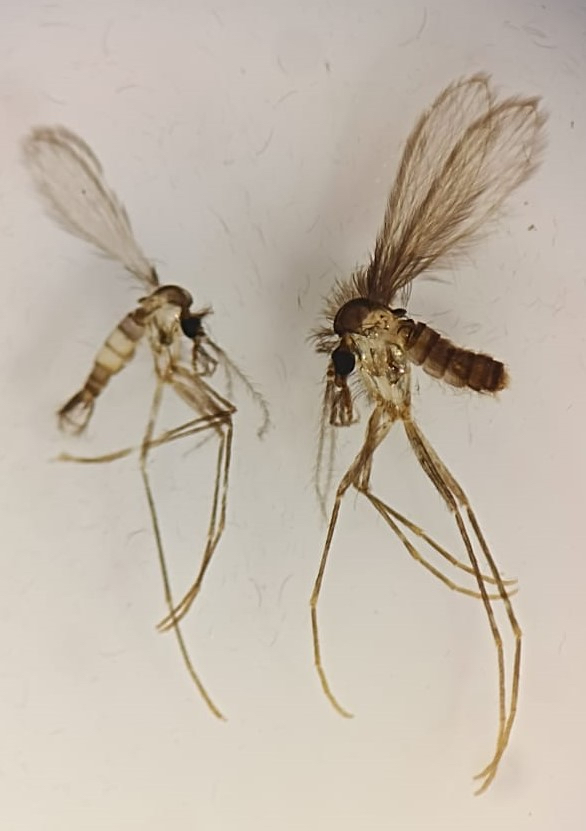Scientists have discovered the specific enzyme that a species of sandfly uses to produce a pheromone attractant, which could lead to the creation of targeted traps to control them and reduce the spread of the potentially fatal disease, Leishmaniasis.
The team from the University of Nottingham's School of Chemistry analysed the genome of the Lutzomyia longipalpis, a species of sandfly native to Brazil and South America that can spread a disease called Leishmaniasis.
The study identified the enzyme, called a Terpene Synthase that is responsible for making the terpene pheromone sobralene, that the insect uses to attract others for mating, a discovery that could lead to the development of commercial traps for targeting and controlling this type of sandfly. The research has been published today in PNAS.

Over 90 sandfly species are known to transmit Leishmania parasites that are spread to humans through being bitten, but Lutzomyia longipalpis is the major carrier of the disease in South America. The most common symptoms of the disease are skin ulcers and lesions which can leave life-long scars, in more serious cases people can become very unwell with fever, weight loss, enlargement of the spleen and liver, and anaemia. The most serious form of the disease, known as visceral leishmaniasis, is invariably fatal within 2-years if untreated. Most cases of visceral leishmaniasis occur in Brazil, but the disease can be found in large parts of the tropics and subtropics.
Terpenes are widely used in nature for chemical communication, but understanding how these structurally diverse natural products are produced by insects is only now beginning to emerge. Males of the sandfly, Lutzomyia longipalpis, use terpene pheromones to lure females and other males to mating sites.
Terpene synthases are responsible for the biosynthesis of many chemicals used by plants and microorganisms for defense and communication. This research identifies the first insect terpene synthase (TPS) from the insect Lutzomyia. It offers the potential for sustainable production of this compound through biocatalysis.
Finding this enzyme has been very difficult and we have been hunting for it for over 2 years. The Lutzomyia genome contains an unusually high number of candidate terpene synthase genes, but thanks to the persistence of Dr Charlie Ducker, a talented researcher on the team, we were able to find the one that makes the pheromone. The beauty of the pheromone approach is that it is very specific for this insect and so the next stage of the project will be to engineer microorganisms to make the enzyme in a way that would produce the pheromone. If we can then find a way to scale this up for commercial use this would be a way to control the populations of these insects and hopefully reduce the spread of Leishmaniasis.






